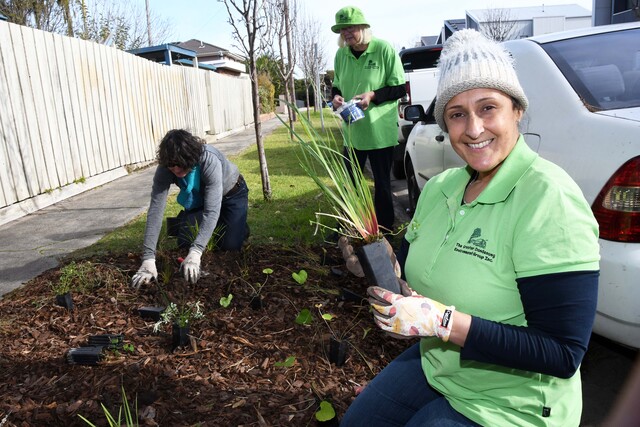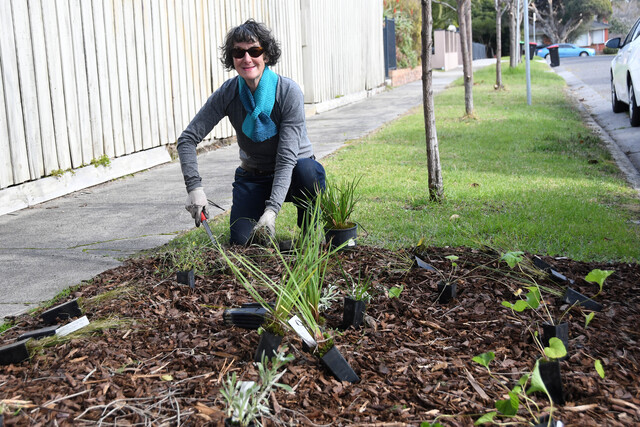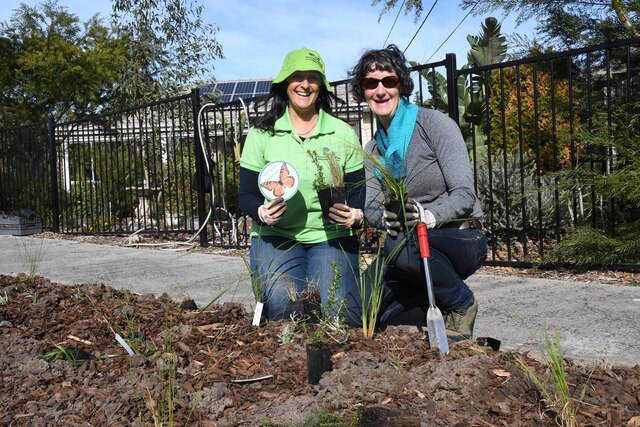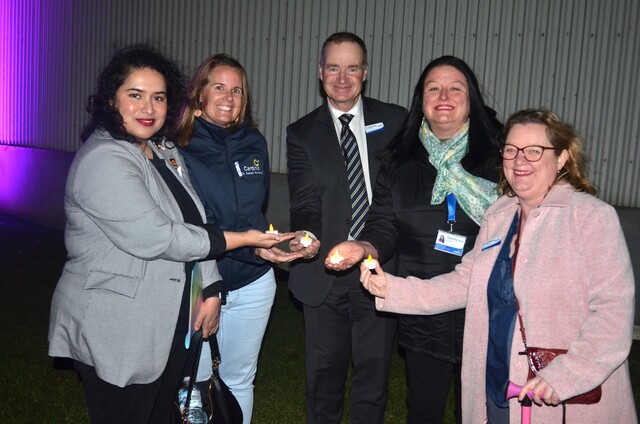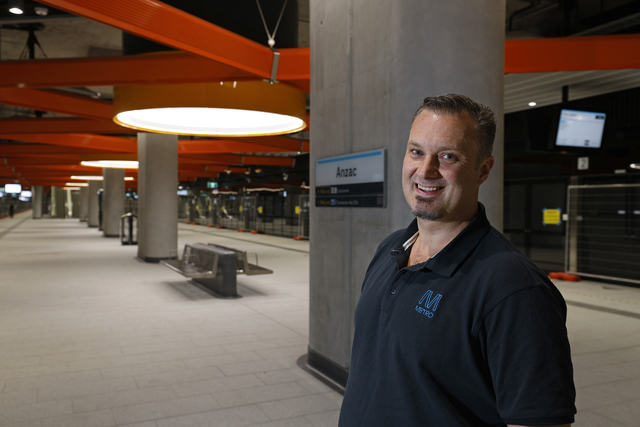Five formerly grass-covered nature strips in Dandenong West have been transformed into native gardens as part of a new biodiversity initiative.
The Verges for Nature project, organised by the Greater Dandenong Environment Group (GDEG) and funded by a Climate Change Action Grant from the City of Greater Dandenong, aims to create a pollinator corridor through the suburb.
The initiative has been wholeheartedly embraced by residents and volunteers alike.
Dandenong West resident, Shirley, said, “I was rapt when I read the flyer. I was really pleased that there was somebody out there that cares about native gardens.”
Focusing on a small cluster of homes near Fotheringham Reserve, the project has seen GDEG volunteers and homeowners work together to replace introduced grass species with flowering native plants.
GDEG president, Isabelle Nash, said, “After removing the grass layer, we were delighted to find the soil underneath was very suitable for native plants.”
Secretary, Judith Sise OAM, is an advocate for the ecological importance of native verges.
“I recently read about a resident who planted a Blue Flax Lily (Dianella caerulea) that flowered and then observed a native bee (genus Lasioglossum).
“That is what GDEG’s Verges for Nature is about – increasing biodiversity and inviting communities to participate in citizen science.”
The group hopes the verges will inspire others to convert their own strips.
Long-term member, Dorothea, said, “I think others in the area will see what we’ve done and think, I can do that!”
Beyond aesthetic value, the project addresses broader environmental concerns such as ecological decline and climate change.
“Planting a range of native plants brings back support for bugs and insects which in turn support birds and other wildlife,” said Isabelle.
“Native verge plantings help us make small steps in fighting and mitigating climate change challenges.”
GDEG has long advocated for increased canopy coverage in Greater Dandenong, one of Melbourne’s least vegetated areas.
While recent council efforts to protect trees are acknowledged, the group believes more outreach is needed.
“Council needs to reach people that don’t come to planting days and don’t read the local papers,” Isabelle said.
“Education is the key and the delivery of that education is extremely important.”
The group encourages residents to consult the City’s guidelines and consider planting native species on their nature strips to both support local biodiversity, and beautify their neighbourhoods.

